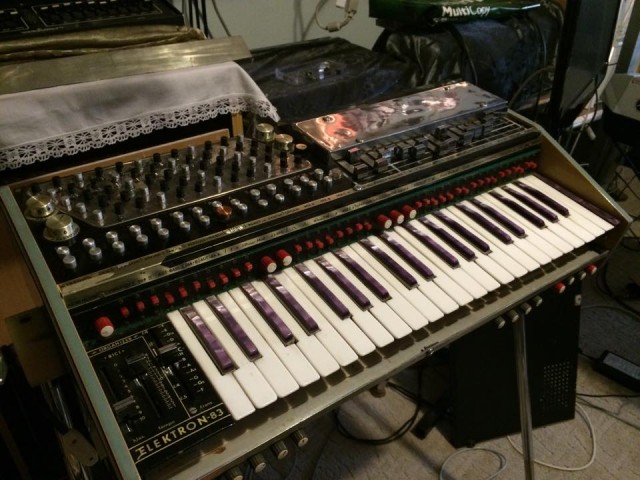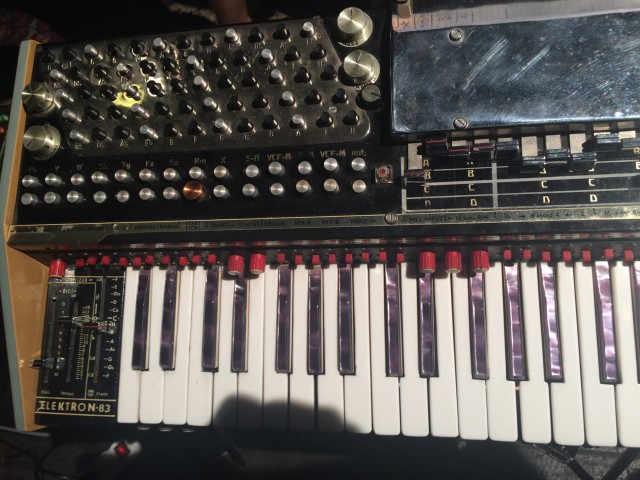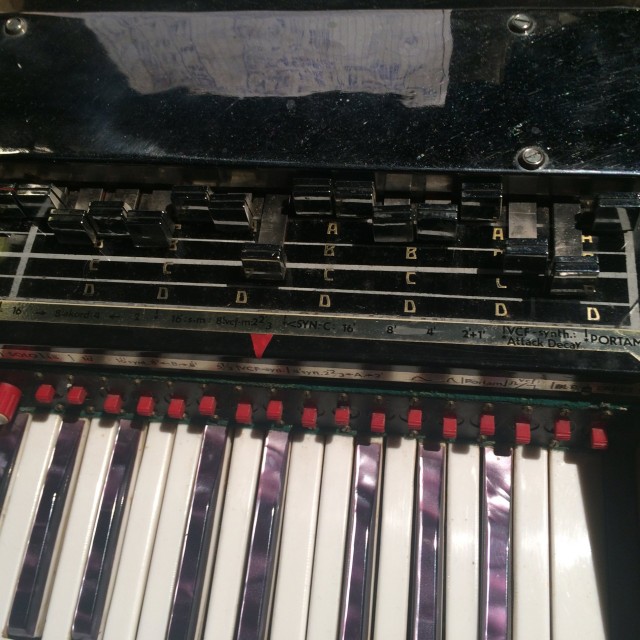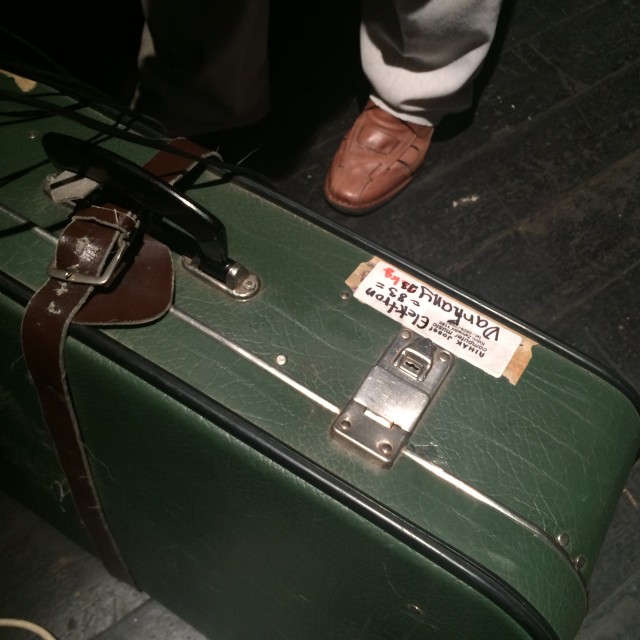Before Elektron – you know, the Swedish drum machine company – there was Elektron.
The Elektron-83 is the creation of Jožka Říhák, legendary in Moravia as a genius electronic instrument builder. His Syntezátor – 83 Unisono went into production, but the ELEKTRON – 83 is one of a kind. We got a live performance and demo/explanation of the creation at Brno’s Synth Fest hosted by Bastl Instruments and their new Noise Kitchen shop in the Czech Republic.
And this thing is simply amazing.
First of all, it does so much that Jožka – now into his 70s and mostly retired from playing – was worried he wouldn’t remember everything he’d made it do. It’s really an early rendition of a workstation/arranger keyboard. It’s part organ, an analog synthesizer with loads of timbral variations. It’s also part drum machine, with a rich analog sound set that might be as at home accompanying techno as playing Czech folks songs. And it’s part effects box, with various additional processing onboard or accessible via a set of stompboxes he also designed.
It’s when you look closer at the design that you begin to realize how deep the rabbit hole goes. Some of the controls are obvious: okay, those are drawbars. But then the drawbars are augmented with switches, and knobs, and combinations of switches “unlock” other features, and then you find more knobs and more switches augmenting the other knobs and switches. If there was a spare bit of panel, he added a control. If he ran out of space for controls, he kept adding functionality anyway, by using combinations of additional switches and knobs.
Take the upper left-hand corner. Rather than play basslines with pedals, he’s used push-buttons arrayed more or less like an accordion. But to add additional chord variations, you can use combinations of keys for altering chords in a layout he devised himself. (A later MIDI control box did the same thing; I think we have to have a go at making this as an iPad app or open hardware.)
All of the components originated in Communist-era Czechoslovakia. The one exception is a Russian bucket-brigade delay chip he got as a gift – though, true to form, even that he wired into a custom feedback loop. (He was at times using the delay almost like a quick, stuttering vibrato.) Elsewhere, there’s a rough simulation of a rotating Leslie speaker.
But there’s an extraordinary amount of love and craftsmanship in the project, down to the faux pink mother-of-pearl inlays on the keys, which he crafted himself from acrylic. The housing and finishing are impeccable, and everything fits into a suitcase.
There are so many subtle details of sound and control that my jaw was dropped through a lot of the presentation. That and he got us all toe-tapping to the greatest Czech hits.
There’s a reason to design an all-in-one instrument like this that’s specific to the musical context of this part of Czech, as well. The Bastl Instruments crew explained to me that traditionally, musical accompaniment for parties in this region will often go upwards of seven or eight hours – with copious amounts of drinking usually involved. An instrument like this therefore becomes a necessity, able to keep putting out accompaniment reliably even as the musician tires and/or becomes otherwise impaired.
With so many tiny innovations, I do hope we’ll get to talk more to Jožka and translate some of what he’s done into English. And maybe we’ll all be shortly messing about with new push-button control layouts.
Photo at top courtesy Bastl Instruments.



